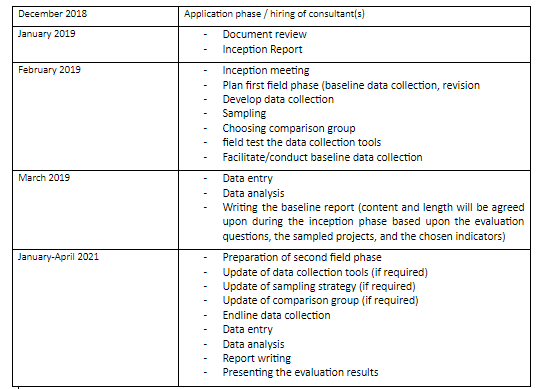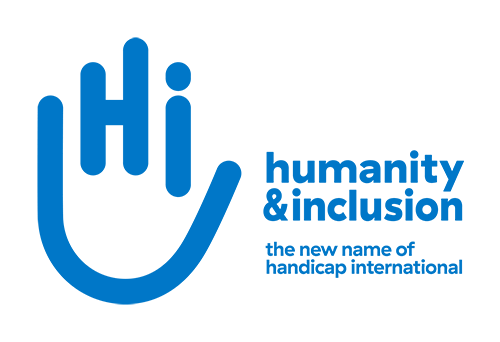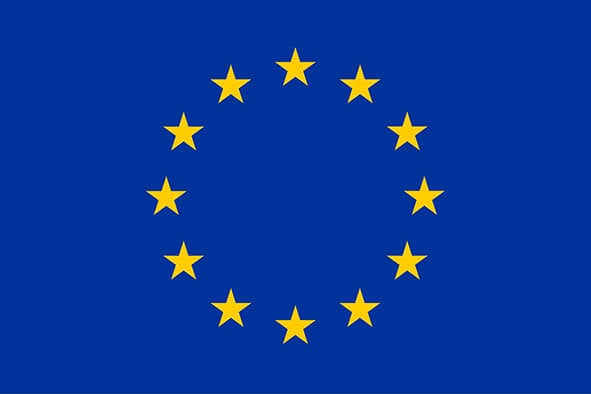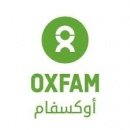Consultant for Project Baseline Study & Impact Evaluation

ToR for Project Baseline Study and Impact Evaluation -AICS
December 2018
- General Background
Oxfam is an international confederation counting 17 organizations working together with partners and local communities in more than 90 countries. Oxfam has been working in the Occupied Palestinian Territories (OPT) and Israel since the 1950s, and a country office was established in Jerusalem in the 1980s. Oxfam mainly works in the most vulnerable communities, such as Gaza, East Jerusalem, and Area C, which represents the 61% of the West Bank and where the Israeli government maintains full military and civil control. In the past Oxfam also worked with impoverished communities in Israel.
In this framework, Oxfam is looking for a consultant to conduct a Baseline/Endline studies and Impact Evaluation of the project “Beyond the barriers. Promotion of a gender sensitive and sustainable rural development to ensure the food security and resilience of vulnerable communities of the West Bank”.
1.1. Project background:
Oxfam together with Rural Women's Development Society (RWDS), Palestinian Livestock Development Center (PLDC) and GVC began implementing a three-year project “Beyond the barriers. Promotion of a gender sensitive and sustainable rural development to ensure the food security and resilience of vulnerable communities of the West Bank” financed by the Italian Agency for Development Cooperation (AICS),
The project’s Global Objective is to contribute to a gender-sensitive, sustainable rural development of most vulnerable communities in Area C and Seam Zone for fostering food security and community resilience. The Specific Objective of the project is to strengthen the endogenous and networking capacities of herders’ and farmers’ communities living in Area C and in the Seam Zone of the West Bank to protect and develop community-based resources and livelihoods opportunities, with special attention to women’s economic and social empowerment.
The expected results (ER) of the project are: ER1. Increased quality and availability of veterinary services, through training and participation of communities and through qualified professional services aimed at enhancing preventive measures for animal health and small ruminant livestock sector’s sustainability; ER2. Increased communities’ capacities of accessing fodder through improved grazing area management and innovative cooperative mechanisms; ER3. Increased abilities and resources of communities - especially women – to develop income generation activities and to access markets and ER4. Increased target groups’ capacities to participate in inclusive and gender-sensitive policy dialogues for the defence and the development of livelihoods and raised national and international stakeholders’ awareness on the right of vulnerable rural communities in Area C and Seam Zone to sustainable rural development.
- Purpose and Scope of the Consultancy
The planned assessment is an impact evaluation which will consist of a baseline assessment (Lot 1) and the end-of-phase evaluation in 2021 (Lot 2). The task will be split in two contracts. A first contract will be awarded for setting-up the impact evaluation design and methodology, and for carrying on the baseline definition and data collection. Based on good performance and further availability of the consultant(s), a second contract to carry on the final impact evaluation will be awarded.
The impact evaluation will assess three of the OECD-DAC criteria.
- Effectiveness
Assessing effectiveness implies measuring the extent to which the project attained its objectives. Questions to consider are: To what extent were the objectives of the project achieved? What were the major factors influencing the achievement (or non-achievement) of objectives? The baseline study will need to deliver the baseline values for the respective indicators relating to these objectives.
Specific effectiveness evaluation questions:
- Does the project achieve the intended goal?
- Has the intervention increased the access to targeted communities to income generation assets and services;
- Have the targeted communities increased their dialogue capacities and interconnections with other communities;
- Have the beneficiary women increased their engagement and ability to sustain income generating businesses by the end of the project;
- Has the cost of accessing inputs and services for livelihoods activities in target communities decreased.
- To what extend have the targeted communities’ cooperatives and CBOs participate actively in local and national policy dialogues;
- What changes has produced the project? Have the produced changes generated the intended benefits? Can the changes in outcomes be explained by the project, or are they the result of some other factors occurring simultaneously? To what extent can observed changes be attributed to the intervention?
- What proportion of women participated in the project?
- Were women affected differently than men?
- Do project impact vary across different groups of intended beneficiaries (males, females, but also members of different communities)? Are there unintended impacts?
- Are there any unintended effects of the project, either positive or negative?
- Is the project worth the resources it costs?
- Should this project be scaled up/replicated? If yes, under what conditions would the intervention produce similar results?
- Were the economic situation of women targeted enhanced? And how the project did that
- Were the social inclusion of women enhanced?
- Were the social aspects of women empowerment addressed and how?
- Have the project increased the ability and the resources for women to be able to develop income generating projects.
- Have the project increased the ability and the resources for women to be able to access the markets
- Have the project increased the capacity of targeted group to be able to participate in gender sensitive policy dialogues?
- Impact
Assessing impact means measuring the changes resulting from the project. This includes direct and indirect, intended and non-intended, positive and negative changes. Questions to consider are: What has happened as a result of the project? What real difference have the project made for the target groups? What would have happened in the absence of the intervention?
Specific impact evaluation questions:
- How and why did the above mentioned changes happen?
- What role did the project have in bringing about these changes?
- Which other factors contributed to bringing about these changes?
- c) Efficiency
Assessing efficiency means measuring the project in relation to the inputs. The focus of this assessment should be less on cost-efficiency (in comparison to alternative approaches to achieving the same outputs) and more on process-efficiency.
- Evaluation Methodology and Process:
Oxfam understands “impact” as is a longer term effect of intervention(s). Consequently, this impact evaluation should not only measure or describe the changes that have occurred but should also identify the role of Oxfam and their partners in producing these changes (causal attribution, causal contribution, or causal inference). In order not only to estimate which changes have occurred as a result of the project but also better understand how these changes came about (the mechanisms), the Impact Evaluation should use mixed methods, combining both quantitative and qualitative approaches.
For the quantitative component, the consultant will carry out a counterfactual analysis aiming to answer the question “what would have happened in the absence of the intervention”. In the context of the project in OPT, the analysis will assess the effect of the project by comparing the changes in outcomes of the target group to the changes in outcomes of the comparison group. The two groups (target and comparison) will be compared on key outcomes identified in the project’s logframe and theory of change.
Qualitative research should complement this approach, seeking to unpack how the changes came about, and what the underlying mechanisms are that were enablers or barriers to change.
The baseline study ought to be designed in such a way as to allow for the measurement of impact at the end of the project in 2021.
The consultant will adopt a gender-sensitive approach , inclusive of all stakeholders, culturally-sensitive and participatory.
- Deliverables:
Lot 1 (First contract):
Inception phase:
- Inception report, detailing the design and methodology for the baseline study (including the set of indicators that will be used) and a proposal of the design and methodology for the impact evaluation, including an evaluation matrix, a draft sampling strategy, and a suggested sample size.
- Quality assurance plan, setting out the systems and processes for assuring the quality of the research process and the deliverables.
- Work plan
Baseline phase:
- Data collection tools (draft, final)
- Fully “cleaned-up” dataset in Excel, if applicable
- Transcripts of qualitative data (typed in word/excel forms)
- Baseline assessment report (draft, final) describing the initial conditions, against which progress can be measured or comparisons be made to show the effects of the project in the final impact evaluation report.
- Presentation of baseline study findings to the project team, and key stakeholders.
Regular progress reports submitted to Oxfam Project manager and MEAL Officer during the consultancy period, detailing 1) activities / tasks completed to date, 2) any challenges faced, 3) any adjustments made in response to the challenges, 4) any deviations from the timeline and explanations for the deviations.
Lot 2 (second contract):
Impact evaluation phase:
- Final impact evaluation design, detailing the (updated) design and methodology for the impact evaluation and including an evaluation matrix, a draft sampling strategy, and a suggested sample size
- Data collection tools (draft, final); these tools will include research instruments used during the baseline assessment, any revisions to these tools, and/or the development of new tools.
- Training conducted for enumerators on the impact evaluation design, sampling framework, research instruments, and research ethics. Duration and content of training to be determined by the consultant(s).
- Fully “cleaned-up” dataset in Excel, if applicable
- Transcripts of qualitative data (typed in word/excel forms)
- Impact evaluation report (draft, final). The report must have a summary that has to be translated in Arabic and Italian languages − Presentation of impact evaluation findings to the project team, and key stakeholders.
- Regular progress reports submitted to Project manager and Oxfam MEAL officer during the consultancy period, detailing 1) activities / tasks completed to date, 2) any challenges faced, 3) any adjustments made in response to the challenges, 4) any deviations from the timeline and explanations for the deviations, and 5) additional human resources and/or logistical support needed.
- Schedule and Budget

جميع الحقوق محفوظة لموقع جوبس.
Required skills and expertise
- Master’s degree in the social sciences (sociology, anthropology, development studies)
- At least 5 years of research and other relevant professional experience
- Sound understanding of various approaches to assess impact
- Expertise in quantitative and qualitative data collection and analysis
- Expertise in project cycle management and extensive knowledge of MEAL and data collection methods;
- Previous experience with INGOs procedures, approaches and operations;
- Acknowledged similar consultancies with recognized organizations;
- Demonstrated analytical and writing skills;
- Excellent knowledge of English, knowledge of Arabic will be an asset;
- Computer skills (advances user in Excel or similar software; STATA is an asset);
- Desirable: previous experience and knowledge of the area
Interested consultants should submit: letter of interest, technical proposal, and financial offer no later than the 29th of December 2018 to the attention of [email protected] The proposal should include the following:
- Objectives -understanding of the scope of the research.
- CV of the consultant(s) including list of similar works
- Technical offer including a preliminary causal approach, design, methodology, and Timeframe for Lot 1 AND for Lot 2 (maximum 5 pages for each Lot); comments on the ToR are also invited
- Detailed budget on a separate sheet, including the Income Tax percentage required to the corresponding government.
All docs are requested in English language.








